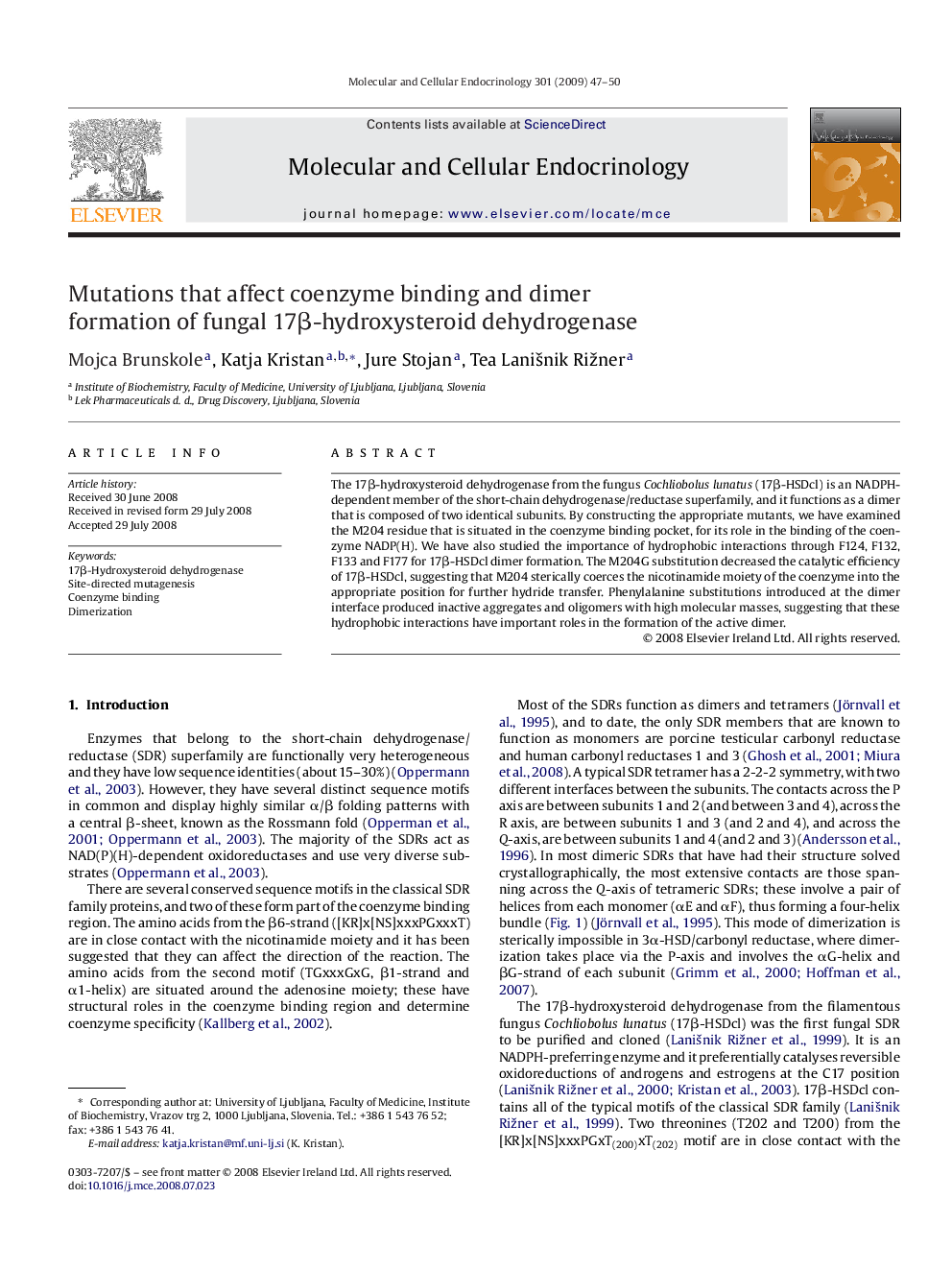| Article ID | Journal | Published Year | Pages | File Type |
|---|---|---|---|---|
| 2197355 | Molecular and Cellular Endocrinology | 2009 | 4 Pages |
The 17β-hydroxysteroid dehydrogenase from the fungus Cochliobolus lunatus (17β-HSDcl) is an NADPH-dependent member of the short-chain dehydrogenase/reductase superfamily, and it functions as a dimer that is composed of two identical subunits. By constructing the appropriate mutants, we have examined the M204 residue that is situated in the coenzyme binding pocket, for its role in the binding of the coenzyme NADP(H). We have also studied the importance of hydrophobic interactions through F124, F132, F133 and F177 for 17β-HSDcl dimer formation. The M204G substitution decreased the catalytic efficiency of 17β-HSDcl, suggesting that M204 sterically coerces the nicotinamide moiety of the coenzyme into the appropriate position for further hydride transfer. Phenylalanine substitutions introduced at the dimer interface produced inactive aggregates and oligomers with high molecular masses, suggesting that these hydrophobic interactions have important roles in the formation of the active dimer.
